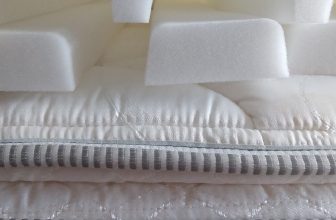How to Get Rid of Mold on Mattress
When it comes to sleeping on a clean, safe mattress, mold is the last thing you want in your bedroom. Not only does it make your mattress look and smell unpleasant, but its presence can also lead to serious health problems.
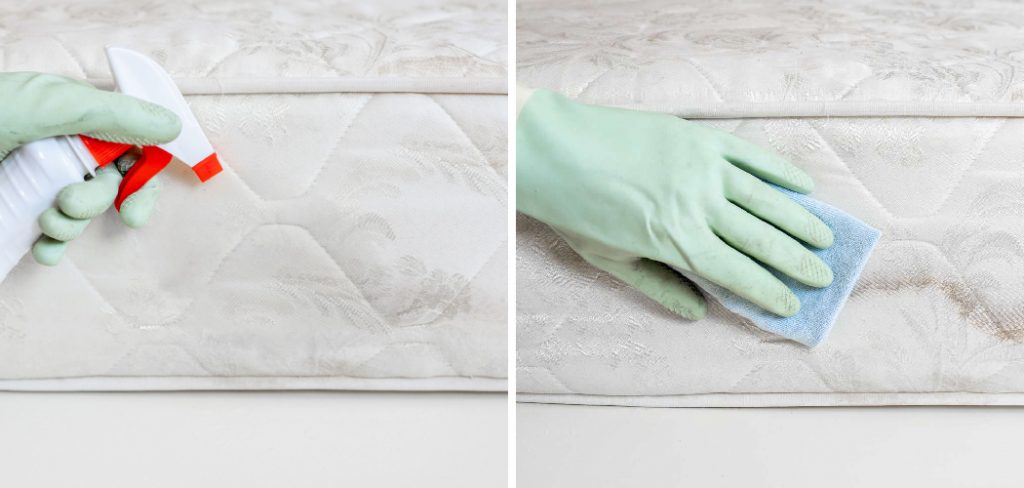
Fortunately, getting rid of mold from a mattress isn’t too difficult — with some simple steps and tips, you’ll have that troublesome mold out of sight in no time! In this blog post, we’ll discuss what causes mattress mold growth, how to identify it properly, and how to get rid of mold on mattress so you know exactly what’s going on with your bedding material.
Finally, provide step-by-step instructions explaining how to get rid of that unsightly blemish without causing further damage or harm. Let’s start with examining the reasons why mattresses are prone to becoming infected by mold in the first place!
What Causes Mold on a Mattress?
Mold on a mattress is often caused by warm, humid conditions that allow mold spores to thrive and grow. Moisture from spills, sweat, or other liquids can also provide the perfect environment for mold growth. In addition, certain fabrics used in mattresses are more prone to collecting moisture and providing fertile ground for mold.
Poor ventilation around the bed can also contribute to an increase in humidity and create an ideal environment for mold growth. To prevent mold from growing on your mattress, it’s important to regularly inspect your bedroom for any signs of excess moisture and take steps to reduce humidity levels if needed.
You should also ensure that you keep all liquids away from your bed to help avoid potential spillage, which could promote mold growth. Furthermore, cleaning and airing out your mattress regularly can help to discourage mold growth. Finally, investing in a mattress protector may also be beneficial as it will provide an extra layer of protection against moisture.
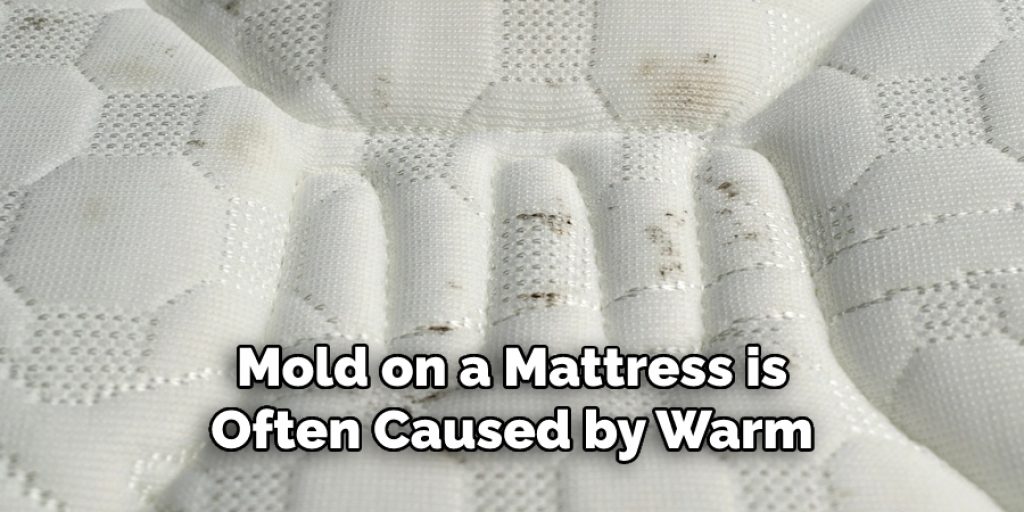
Keeping your bedroom well-ventilated and free from excess moisture is one of the best steps you can take to prevent mold growth on your mattress. Taking these preventive measures can help make sure that you don’t have to deal with the hassle and expense of treating existing mold or having to replace your mattress due to extensive damage. For more information about how to get rid of mold on a mattress, please consult an expert for professional advice.
8 Effective Methods How to Get Rid of Mold on Mattress
1. Use White Vinegar
White vinegar is a natural disinfectant that is effective at killing mold spores. To use it, mix one part white vinegar with two parts water in a spray bottle. Spray the mixture onto the mattress and allow it to sit for several minutes before scrubbing vigorously with a brush or cloth.
Rinse off the solution with clean water and let your mattress dry completely before using it again. If the mold stain persists, repeat this process until it is removed.
However, be sure to use proper safety gear, such as gloves and a respirator, when working with vinegar. Though it is a natural cleaner, it can still cause irritation to the skin and eyes if mishandled.
2. Use Hydrogen Peroxide
Hydrogen peroxide is another natural disinfectant that can be used to kill mold spores. It can be used in conjunction with borax to create a powerful cleaning solution. To use, simply mix one cup of hydrogen peroxide and 1/4 cup of borax in a bowl.
Then apply it to the affected area, scrubbing with a sponge or brush until the mold is gone. Once the area is clean, rinse it off with water and let it air dry before remaking your mattress. This method may require multiple applications.
If you have a severe mold infestation, it might be best to hire an expert to remove the problem. To prevent future mold growth, use a dehumidifier to keep the air in your bedroom at an optimal humidity level. Additionally, use hypoallergenic mattresses and pillow covers, as well as airtight containers for storing blankets or pillows.
3. Use Baking Soda
Baking soda is a natural mildewcide that can be used to kill mold spores on a mattress. Sprinkle it generously over the affected area and let it sit for several hours to absorb moisture and odor.

After that, vacuum up the baking soda and repeat steps 1 and 2 once more. Finally, use a disinfectant cleaner to remove any remaining mold spores. For best results, keep the area as dry as possible to prevent future mold growth.
Be sure to wear a mask when handling baking soda and disinfectant cleaners, as both can be hazardous if inhaled. Once all of the molds have been eliminated, use a mattress cover to protect your mattress from future moisture and mold growth. This will help to keep your mattress clean and healthy for years to come.
4. Use Tea Tree Oil
Tea tree oil is an essential oil that has natural antifungal properties. It can help break down mold colonies and prevent them from returning. To use it, mix a few drops of tea tree oil with water in a spray bottle. Spray it directly onto the mattress and let it dry.
Repeat this process daily for the best results. Alternatively, you can mix tea tree oil with baking soda and create a paste. Apply the paste to the affected areas of your mattress, let it sit for 30 minutes, and then vacuum it off.
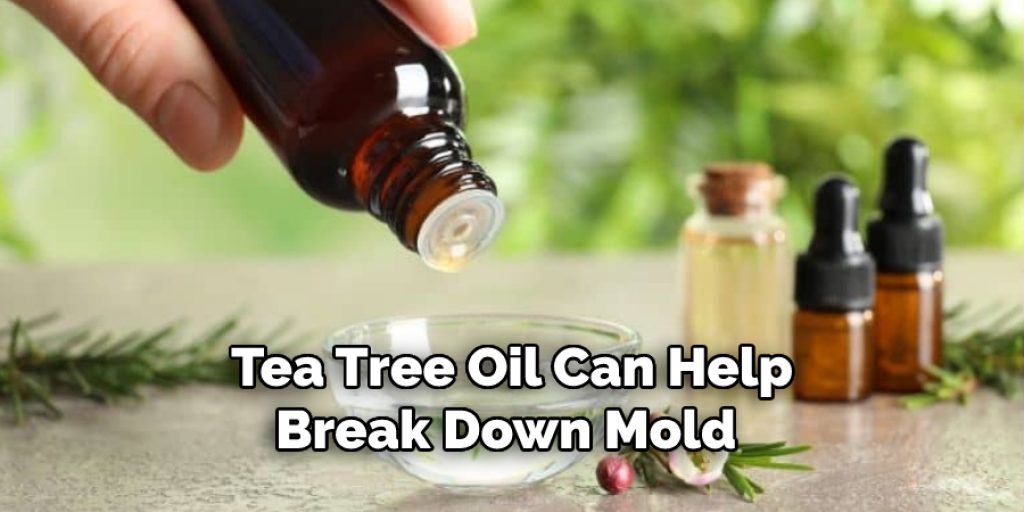
You may need to repeat this process several times to get rid of all the mold. Always follow the directions on your essential oil bottle and use caution when applying the oil to your mattress. When you’re finished, make sure you vacuum the entire area and open a window to ensure proper ventilation.
5. Use Lemon Juice
Lemon juice is another natural disinfectant that can be used to kill mold spores. The acidity of the lemon juice makes it a powerful cleaning agent. Use lemon juice to remove mold from your mattress, and use a spray bottle to apply the juice evenly across the affected area.
Allow it to sit for 10-15 minutes, then blot the area with a cloth or paper towel. While lemon juice can help kill the mold, it will not remove the stain that is created from its growth. If a stain remains, use a mixture of baking soda and water to scrub it away.
Then, use a dry cloth to absorb any remaining moisture from the mattress. Finally, if desired, you can sprinkle baking soda over the mattress to help eliminate any lingering odors caused by the mold.

6. Use Grapefruit Seed Extract
The grapefruit seed extract is an essential oil that has natural antifungal properties. To get rid of mold on your mattress, mix a few drops of the extract in some water and spray it onto the affected area. Leave it to sit for a few minutes before wiping it away with a damp cloth.
Be sure to let the mattress air dry completely afterward. This method is especially effective for killing mold spores, preventing them from coming back.
It also helps to add a few drops of the extract to your laundry detergent for extra protection. To be extra sure, use the extract every few weeks just to make sure that no mold is growing on your mattress.
7. Use Rubbing Alcohol
Rubbing alcohol is a strong disinfectant that can be used to kill mold spores. Start by using a vacuum cleaner to remove as much of the mold as possible. Then pour rubbing alcohol over the affected area and let it sit for about 30 minutes.
This should help to kill the mold and make it easier to clean. After about half an hour, use a damp cloth to wipe away the rubbing alcohol, taking care to also remove any lingering mold. Repeat this process as many times as necessary until all visible signs of mold are gone.
Although rubbing alcohol is a great way to get rid of mold, it’s important to note that it can also damage the mattress if not used properly. For this reason, it’s important to use caution and follow the instructions closely.
8. Use a Vacuum
Once you’ve used one of the suggested solutions above, you’ll want to vacuum up any remaining mold on your mattress. This ensures that all of the mold spores have been thoroughly removed from the surface and helps to prevent them from spreading further throughout your home.
Use a high-powered vacuum cleaner with attachments that can fit into tight spaces and cracks in order to reach all of the molds. Vacuum the mattress on both sides, and don’t forget to vacuum any areas around the edges of your bed frame too.
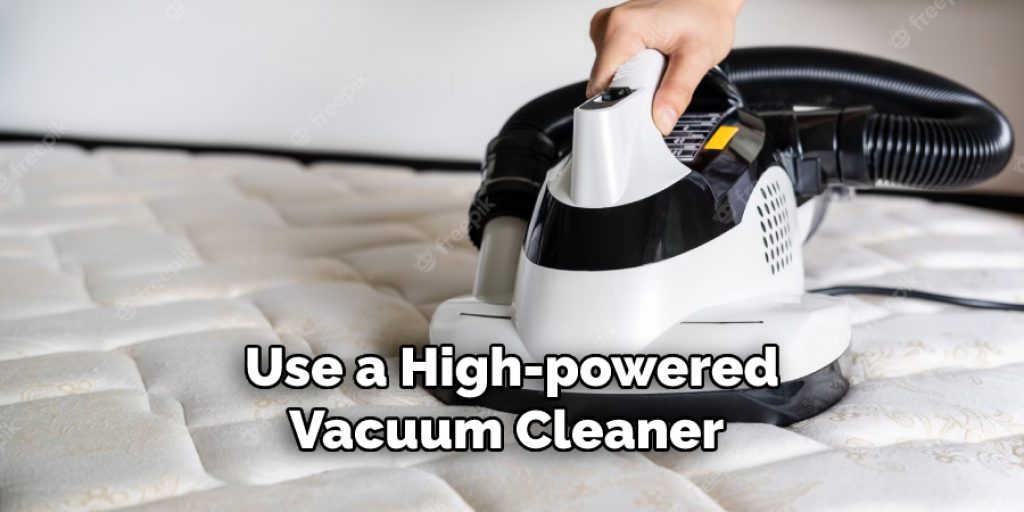
Once you’ve finished vacuuming, make sure to discard the bag immediately outside in a garbage bin that is sealed tight. After cleaning and discarding the mold-ridden items, it’s recommended that you replace your mattresses and other porous items, such as pillows and box springs.
Things to Consider When Getting Rid of Mold on Mattress
1. Type of Mattress
Different mattress types require different cleaning methods. Before attempting to clean the mold, check the manufacturer’s instructions for the specific type of mattress you have.
2. Safety
When trying to get rid of mold on a mattress, it is important to take safety precautions. Make sure that you wear protective gear such as gloves, eye protection, and a respirator when handling the moldy mattress or any cleaning products you plan to use.
3. Cleaning Products
Once you have determined what kind of mattress you are dealing with and taken appropriate safety measures, determine which cleaning products will be most effective for the removal of the mold.
4. Cleaning Process
Be sure to read and follow all instructions on the cleaning product label, including any warning labels. Start by vacuuming the area to remove any loose particles of mold. Then use your chosen cleaning product according to its instructions to clean the affected area.
5. Prevention
Once you have successfully removed mold from your mattress, it is important to take steps to prevent the future growth of mold. Be sure that your bedroom is adequately ventilated and free from moisture build-up due to humidity or leakage issues in order to reduce the risk of mold returning in the future.
Is It Safe to Sleep in a Room after Cleaning Mould?
Yes, it is safe to sleep in a room after cleaning the mold. Cleaning mold from your mattress and other items in the room will help to eliminate any allergic reactions or respiratory issues associated with exposure to mold.
After cleaning, it is important that the room be thoroughly dried out in order to prevent new mold from forming. It is also important to ensure that all cleaning supplies are properly disposed of after use, as some products can be harmful if used incorrectly.
Additionally, checking your mattress on a regular basis for signs of mildew or mold can help to prevent any further issues. Taking these precautions after cleaning your mattress and room should ensure a safe and healthy sleeping environment.
Overall, cleaning mold off your mattress and other items in the room can help you to enjoy a safe and healthy sleeping environment free from any potential allergic reactions or respiratory problems. Taking the proper precautions and checking your mattress on a regular basis can help to prevent any further issues with mold in the future.

Conclusion
In conclusion, mold on mattresses is common, but it’s not something to be taken lightly. Removing mold from a mattress requires dedication and attention to detail to ensure the process is done correctly. Taking these steps will help reduce the health risks associated with mold exposure and preserve the integrity of your mattress for long-term use.
Remember to use a combination of mild soap and water, as well as natural ingredients like vinegar and baking soda, and don’t forget to always dry the mattress completely before using it again. After you’ve removed the mold, frequent inspections may help prevent reoccurrence in the future. Now that you know how to get rid of mold on mattresses, take action today to create a healthier environment in your bedroom!



